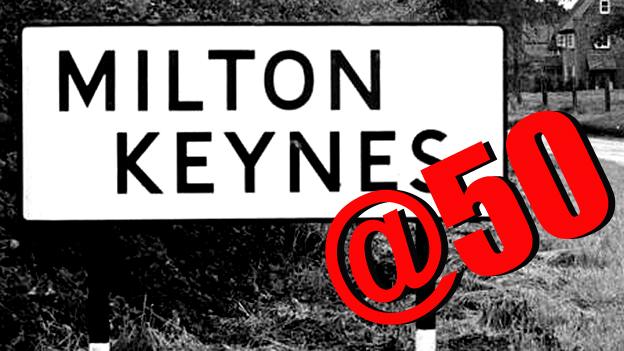Milton Keynes Homeworld '81: What can we learn from homes built 40 years ago?
- Published
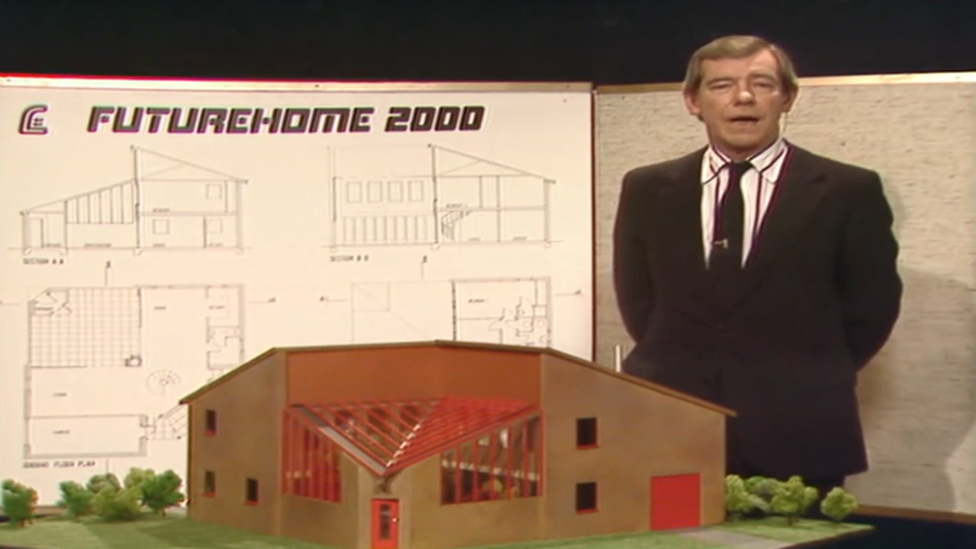
Developers hoped the energy-saving home would be the first of many of its kind
Forty years ago an exhibition took place showcasing the future of housing. What lessons were learned - and are they still relevant today?
Developers were invited to build "innovative" homes in Milton Keynes and in May 1981 more than 150,000 people paid to visit the Homeworld exhibit.
Thirty-six homes were built, ranging from studios to five-bedroom homes, and all still stand today.
The BBC has spoken to one of the original architects and those who have lived in the homes about what the designs can teach us.
'We didn't regret it at all'

Carole and Paull Flello moved into the energy-saving "Futurehome 2000" in 1981 with their three children
In 1981 Carole and Paul Flello moved into "Futurehome 2000", an energy-saving home designed by the BBC's The Money Programme.
The couple and their three children were moving to Milton Keynes for Mr Flello's job.
"Paul showed me the city centre which was in construction - just a few shops were open - then he showed me this house and Homeworld," Mrs Flello said.
"I said 'who in their right mind would buy a house like this?' and a few weeks later we were in.
"We didn't regret it at all. It was a fantastic experience."

Mrs Flello said the property was "a great house to bring children up in"
The house was designed with solar panels, special double glazing and high standard insulation.
Mr Flello said the family's fondness for modern technology was "spurred by this house".
"All of the features worked," he said.
"The windows have a special gold coating to allow heat to come in but then reflect it back into the house so it can't go out.
"It was really clever technology and due to the investments in technology in the 1980s housing is better quality today."
The couple said they had "very happy memories" living in the home and had made lots of friends with the wide variety of people who moved into the Homeworld properties.
"They were all a bit weird, the houses here, so all the people were eclectic, all different people, but we all got on really well," Mr Flello said.
'The house was well ahead of its time'
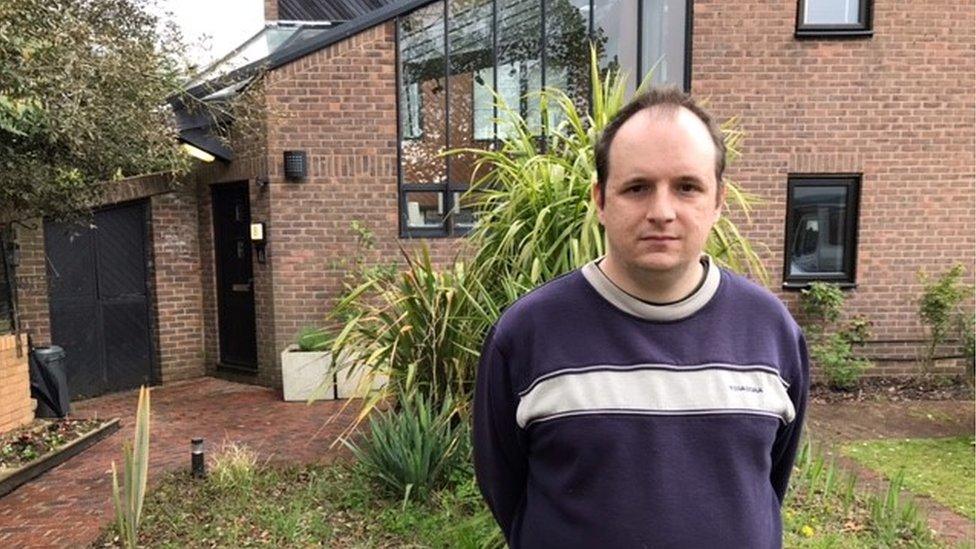
Iain Mason has lived in the property for seven years
Iain Mason is one of the current owners of the house first lived in by the Flello family.
He said he was first attracted to the house due to "the space, open-plan living, the design and the energy-saving credentials".
"The technology that is in there stands up even today," he said. "It is very energy efficient.
"The heating requirements are low, even with the original boiler still there."
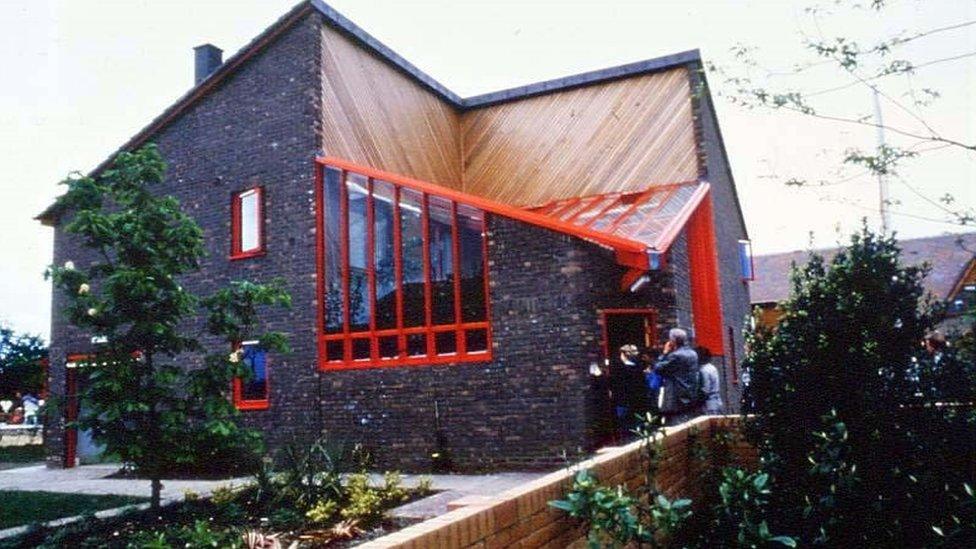
The property was built as part of the exhibition in 1981
He said a recent energy survey showed it would not be worth paying for a new boiler as the original was still so efficient.
"It was well ahead of its time," he said.
Mr Mason said the home was "very well designed" and that after seven years in the property he was "still very happy".
'It has been slow progress'
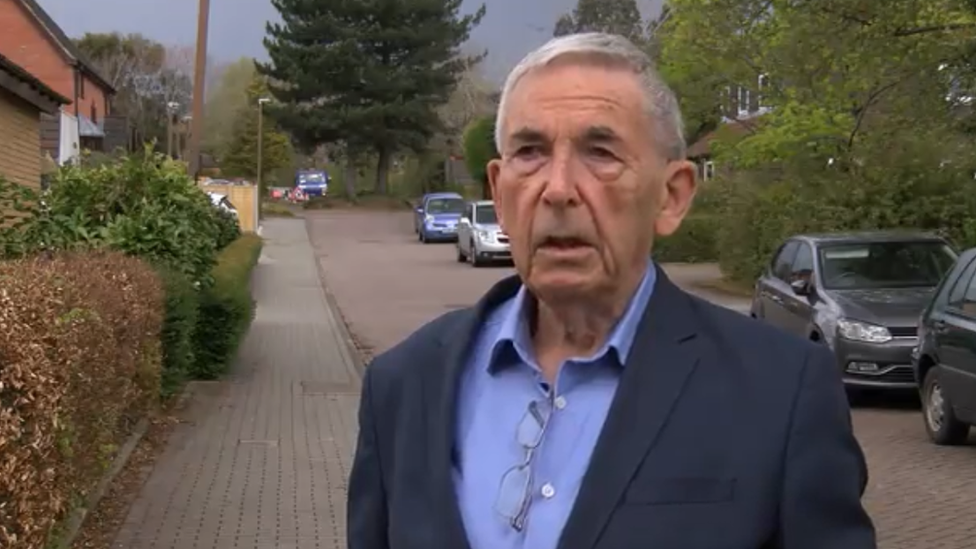
John Doggart worked on the design of the homes in the exhibition
John Doggart worked as architect for Milton Keynes Development Corporation, the team behind Homeworld.
He said the aim of the exhibition was to get developers "on board to build huge chunks of Milton Keynes".
"This was the first big thrust to get the private sector fully involved in Milton Keynes," he said.
Mr Doggart said a main focus of the event was energy.
"There was a general interest in it and at the time there was a group predicting oil would disappear soon," he said.
"Homeworld was a great success as it allowed people to showcase low-energy homes.
"It was the first time people started to think about how we would deal with little energy being left."
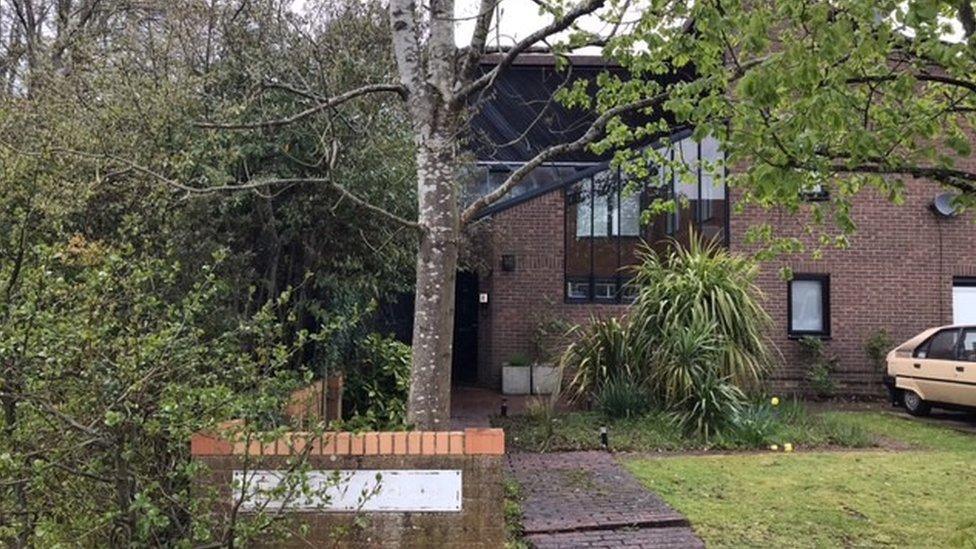
The "Futurehome 2000" pictured in 2021
Mr Doggart said he had hoped more of what was showcased in 1981 would have been used in future builds.
"It has been much, much slower progress than I thought," he said.
"We showed a house that was attractive, cost-efficient and it was going to solve the the problem."
He believes if the model had been more widely adopted "we would have had a much better world to live in".
"Climate change is now right with us, we are seeing it happen all the time," he said.
"We are going to get a huge problem if we don't do something about it."

Find BBC News: East of England on Facebook, external, Instagram, external and Twitter, external. If you have a story suggestion email eastofenglandnews@bbc.co.uk, external
Related topics
- Published9 October 2020
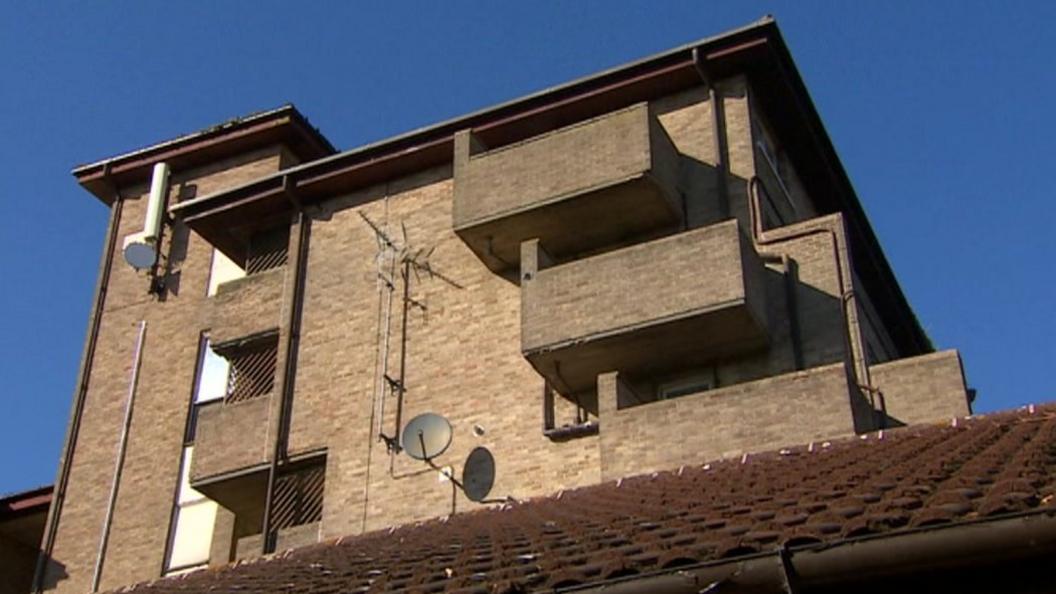
- Published25 September 2019

- Published26 September 2017

- Published23 January 2017
